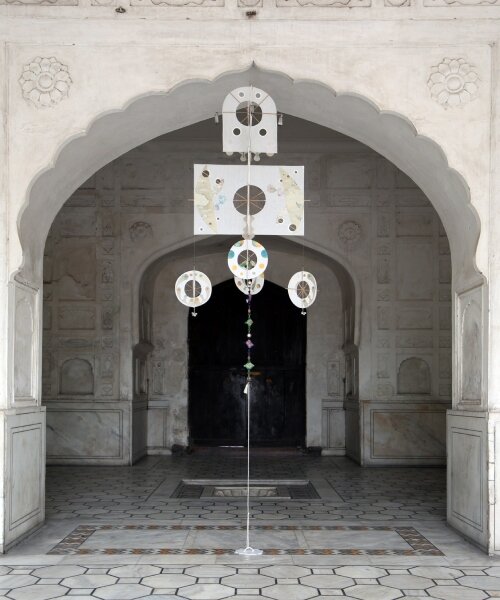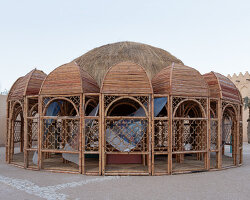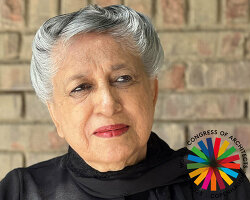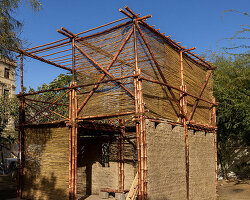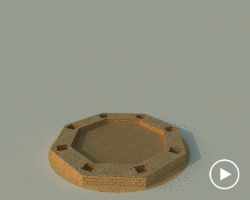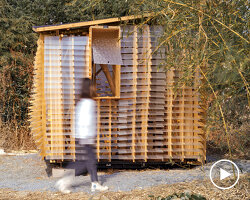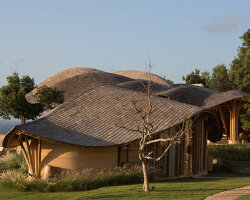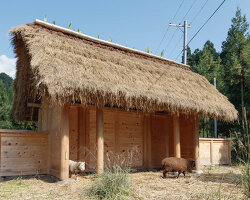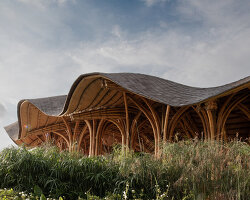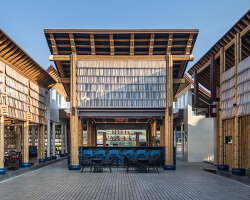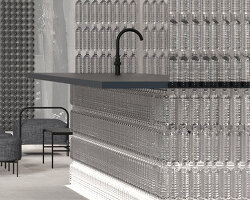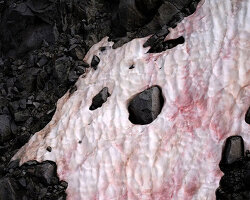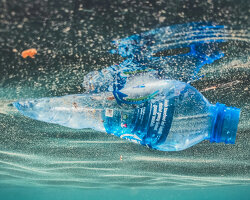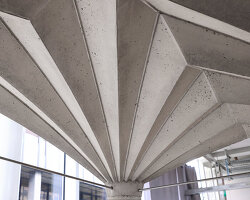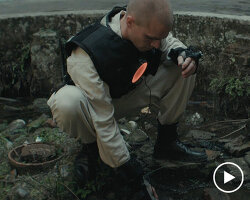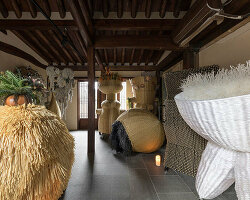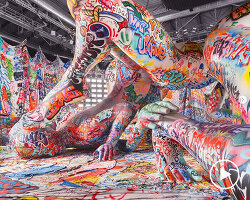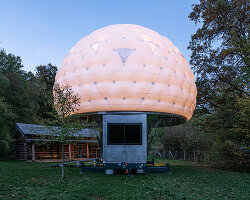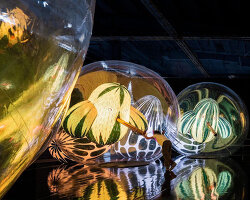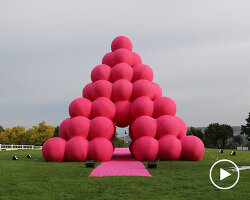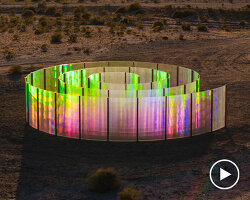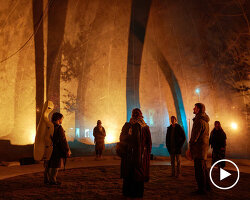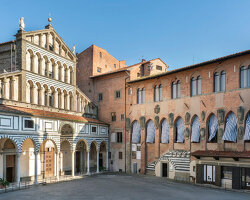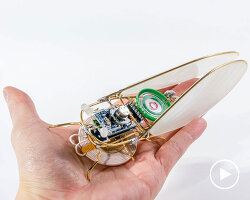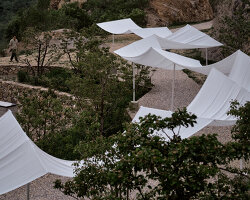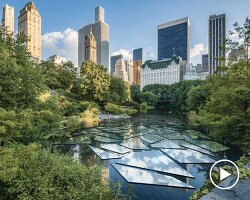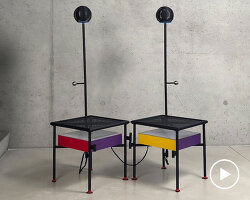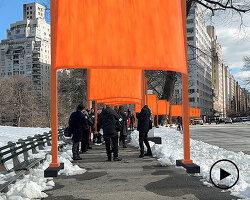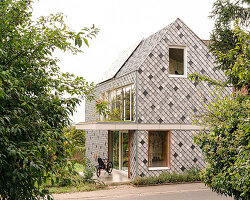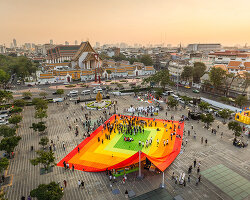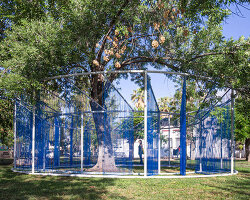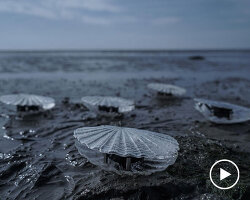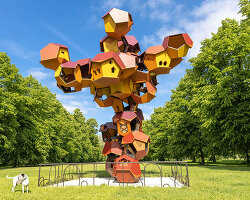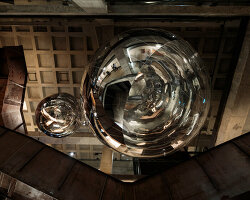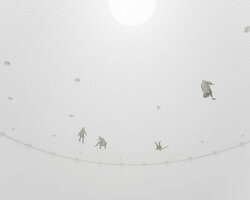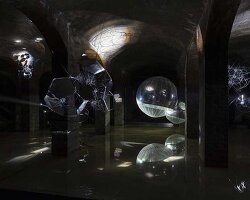lahore biennale imagines sustainable futures for third edition
For the third Lahore Biennale, curator John Tain transforms one of Pakistan’s most historically abundant cities into a crossroads for ecological activism and cultural heritage preservation. This year’s theme, Of Mountains and Seas, brings together the perspectives of 60 artists representing over 30 countries to spotlight the climate vulnerabilities that have impacted the land and the people of the broader region. From Yasmeen Lari’s bamboo shelters for flood survivors and Tomas Saraceno’s inflated structure reclaiming plastic waste, to Haegue Yang’s paper sculptures carrying the historic charm of Mughal vernacular, Tain’s curation takes on the raw realities of climate change while inspiring adaptation in the face of mounting ecological threats.
Together, the artists urge viewers to reflect upon their relationship with their natural and built environments, and reconsider how they can adapt to climate change and its destructive cycles. Tain unravels a pursuit of indigenous solutions and discussions embedded in both Lahore’s historic spaces and daily rhythms to image sustainable futures. Interventions, performances, and site-specific installations reclaim UNESCO World Heritage Sites while activating familiar transitory pockets to deliver fresh perspectives of the bustling city. The biennale concluded on 8th November.
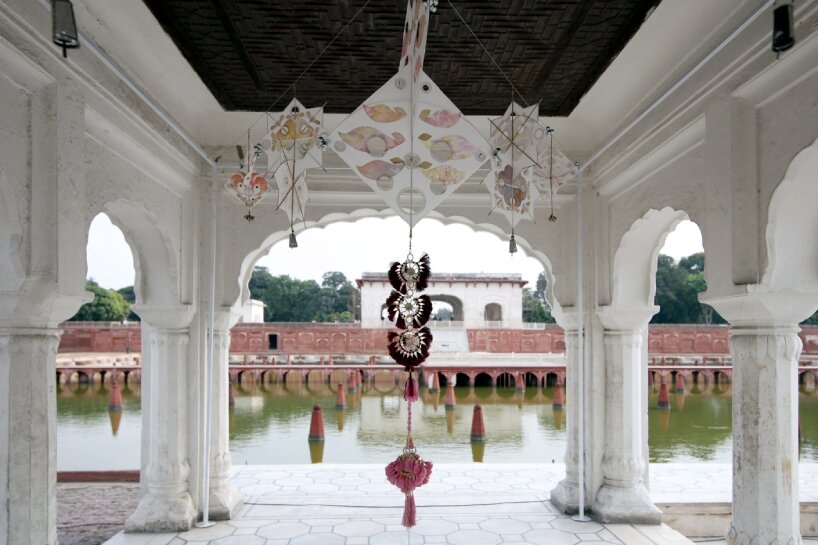
all images by Amna Zuberi, courtesy of the Lahore Biennale Foundation, unless stated otherwise
activating heritage sites and mundane urban spaces
In parallel to their daily roles, some of Lahore’s most iconic public locations become portals for contemplating both global climate challenges and the specific realities faced by Pakistan. The Mughal-era Lahore Fort and Shalimar Gardens become opulent backdrops for exhibitions and installations centered around themes of hydrology, agriculture, climate adaptation, and vernacular forms. Visitors entering the historic fort are first greeted by architect Yasmeen Lari’s limecrete Chula stoves and Octa Green shelters — emergency housing units conceived for communities displaced by flooding in Sindh. Assembled with renewable bamboo frameworks, the structures promote zero-carbon and zero-waste architectural principles shaped by local techniques and readily available materials.
In the paradise gardens of Shalimar, South Korean artist Haegue Yang’s paper sculptures catch the fleeting breeze passing through the arched marble and stone pavilions. Titled Spring Sailors – Six Synecologies Aloft, the small kites evoke the precision of Islamic geometry while gently showcasing the site’s passive cooling features and alluding to a liminal dimension. Nearby, a somewhat alien presence invites visitors to scale its eclectic yet primitive form of bamboo and metal stilts adorned with upcycled waste materials. Mebuyan’s Colony by Filipino artist Leeroy New is an apparatus inspired by a mythological goddess, repositioning negative social implications of such materiality through community engagement.
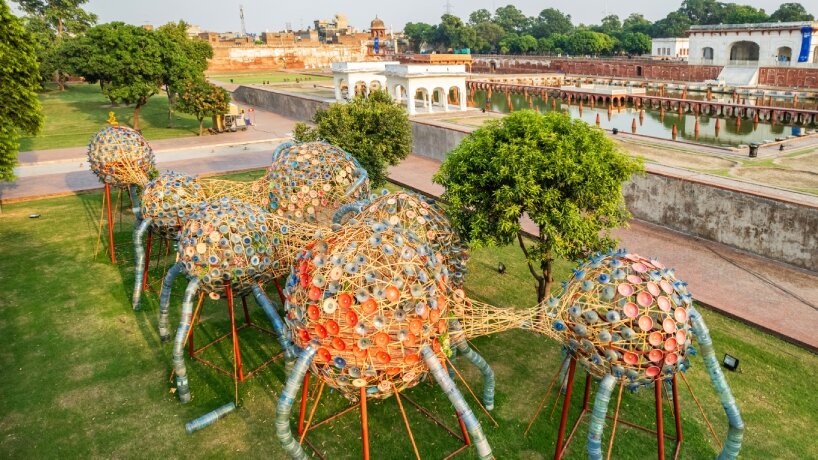
Mebuyan’s Colony by Leeroy New
of mountains and seas: the politics of water and urbanization
A short walk away at the Shalimar Gardens metro station, Imran Qureshi speaks to Lahore’s complex water dynamics. With Water Bodies, the Pakistani artist paints a rooftop tableau visible to commuters from the upper platform, where the same blue water tanks seen across the city are marked with his signature orange splashes and floral motifs. Silhouettes of these ubiquitous vessels are then translated into a translucent window installation on the station’s lower section.
Politics of water — in its natural state — is also explored by the DAVRA collective at the Alhamra Art Center with Taming Waters and Women in Central Asia. The project, about the intersectional struggles of women and water in Uzbekistan and beyond, focuses on the canal built in 1939 to divert water from the Syr Darya river to the cotton fields. The meandering blue tapestry recalls the river’s flow, imprinted with a series of documentary photographs, archival videos, and textiles that showcase the significance of cotton production in the country’s agricultural landscape, and the associated legacies of women’s labor.
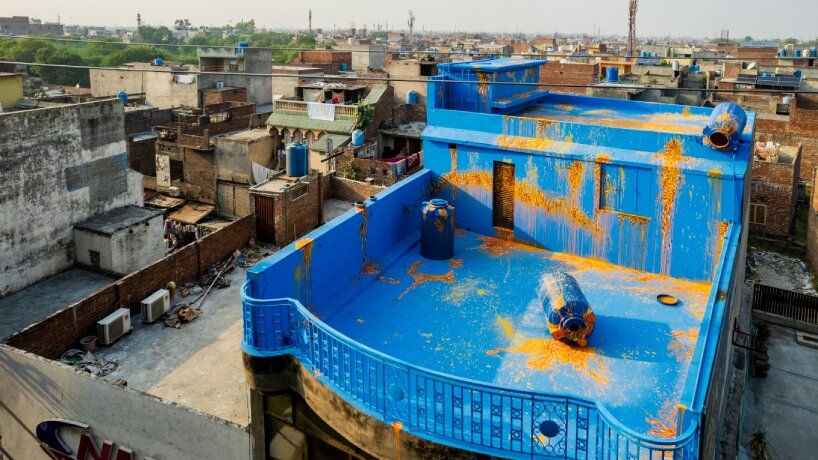
Water Bodies by Imran Qureshi
sites of learning and collaboration for sustainable living
John Tain’s curatorial approach to the biennale embraces diversity, hope, and international collaboration, supported by a series of public programming organized by the Lahore Biennale Foundation spearheaded by Director Qudsia Rahim. Throughout the festival’s run, the Crossroads Tent served as a public stage for learning and reflection hosting various workshops and gatherings poised to draw the city’s residents — in particular its younger generations — into a dialogue on sustainable living. Doubling as an active colony for bees, the wood and cardboard pavilion by Spain-based INLAND reimagines the nomadic tents used traditionally by pastoralists across Pakistan.
Likewise inviting community participation, Thailand-based Womanifesto at the YMCA presents WeMend, a workshop inviting visitors to sew and embroider a collective monument to feminist solidarity while exchanging reflections on social identities. Students and faculty members from local universities alongside artisans from non-profits gradually crafted this installation which grew from personal belongings, scraps, and newly woven artworks to slowly take over the entire room.
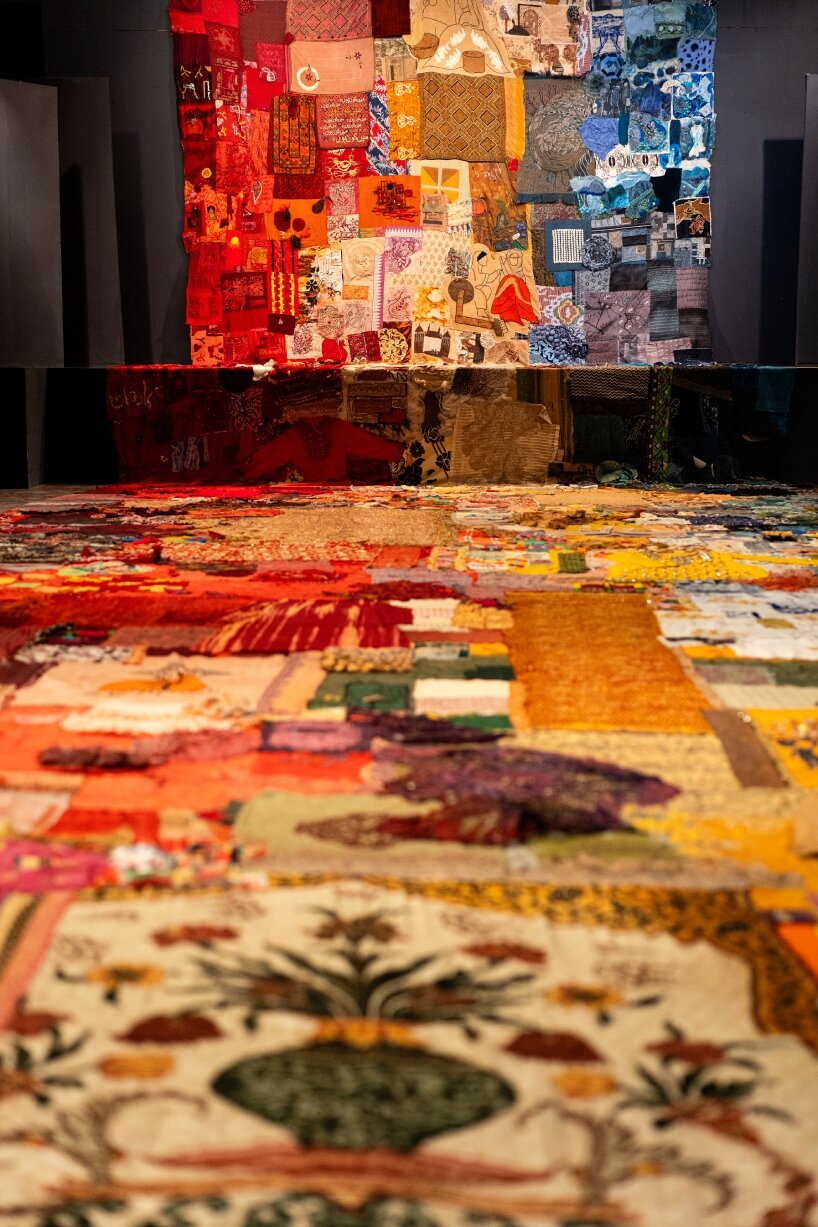
WeMend by Womanifesto
Argentine artist Tomas Saraceno too collaborates with Lahore’s university students to present the 92nd iteration of his ongoing Museo Aero Solar series at Bradlaugh Hall, a colonial site undergoing restoration. A vast inflatable structure is assembled from cut, dried, and pasted plastic bags that would otherwise end up in landfills, patchworked into a canvas for personal stories and messages of hope and resilience from biennale-goers.
Dryden Goodwin’s Breathe similarly speaks to the global health emergency of pollution, illustrating clean air campaigners struggling to inhale and exhale. The British artist’s series which began in London appears at various points throughout Lahore — seen in transit or outside of cultural spaces — with posters and animations spotlighting how this invisible crisis is at odds with universal human rights to clean air.
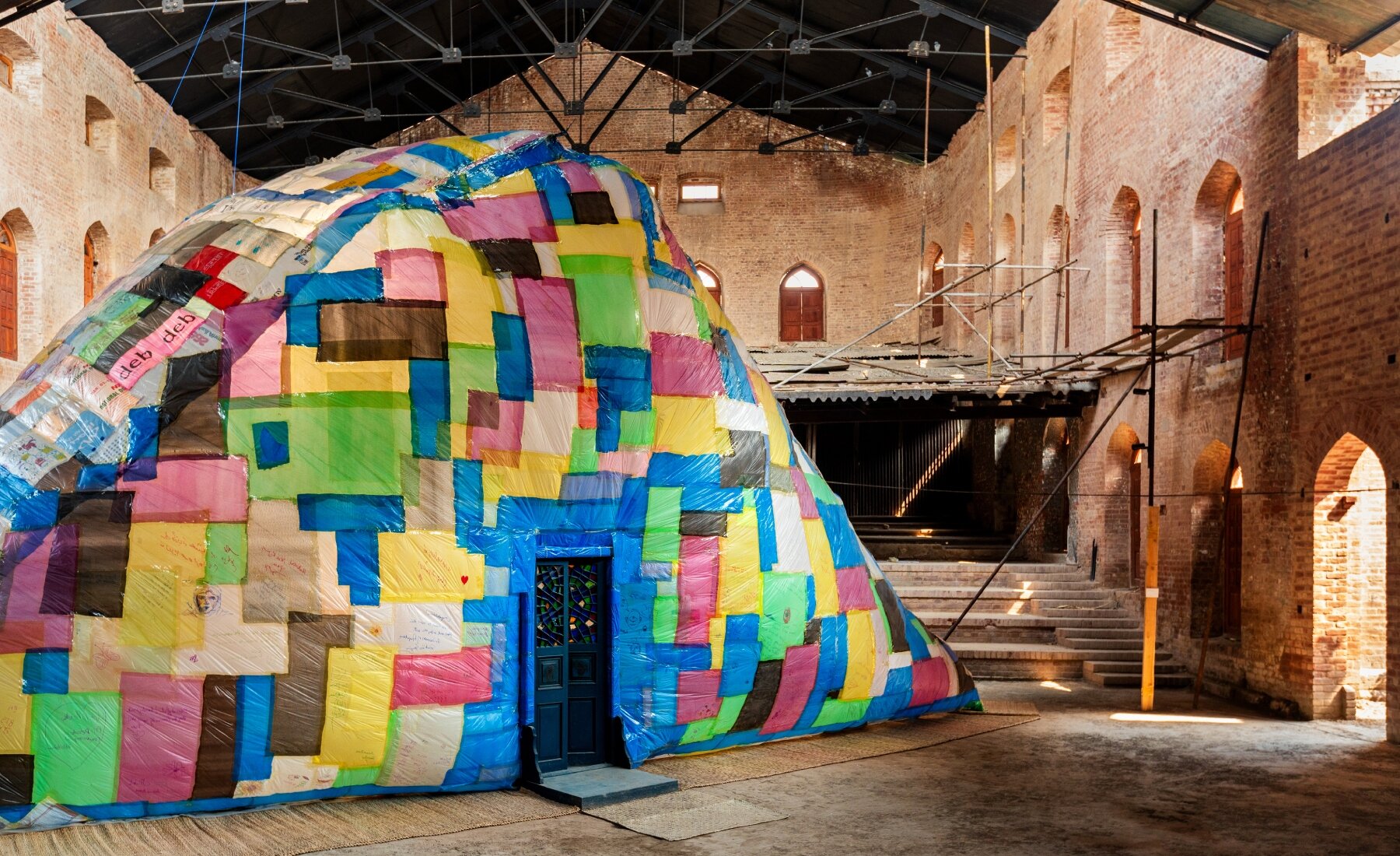
Museo Aero Solar by Tomas Saraceno
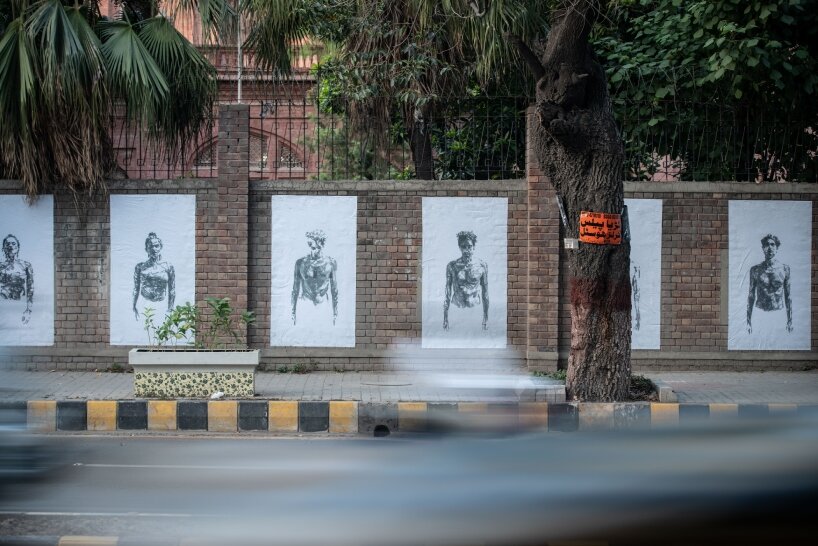
Breathe by Dryden Goodwin
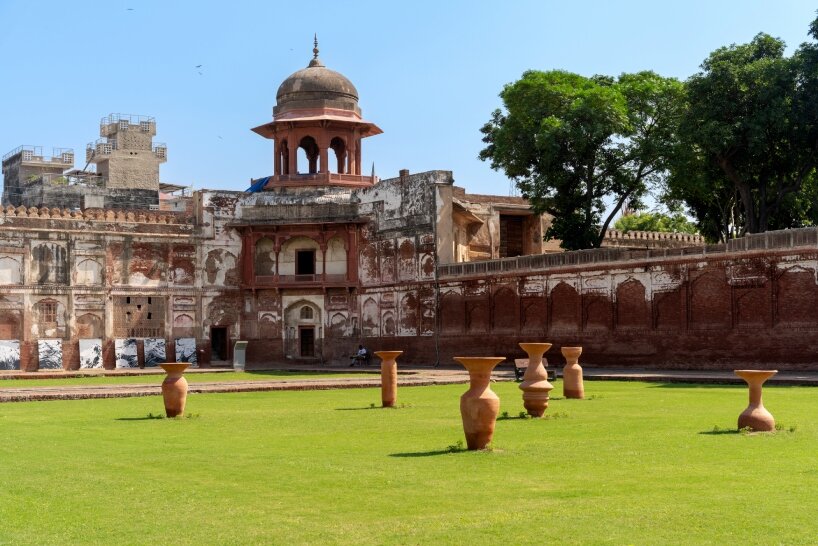
Speaking to the Ground by Daniel Otero Torres
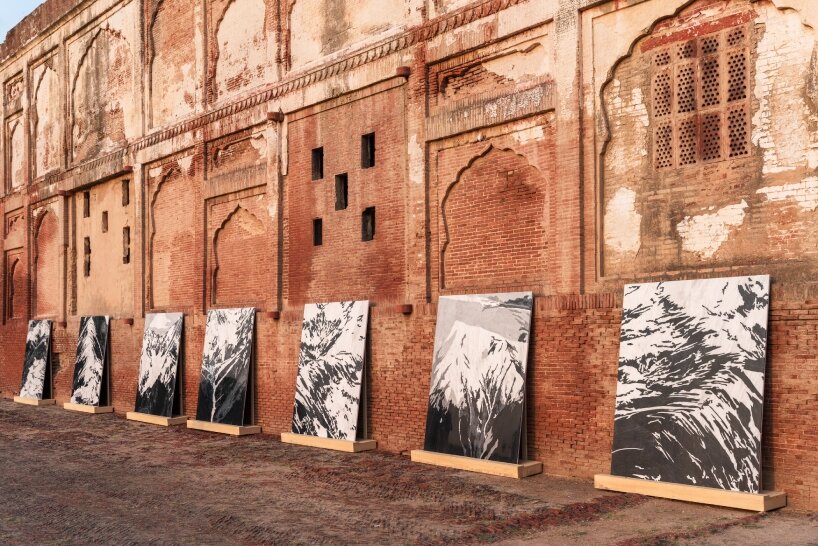
Aerial Studies by Hamra Abbas
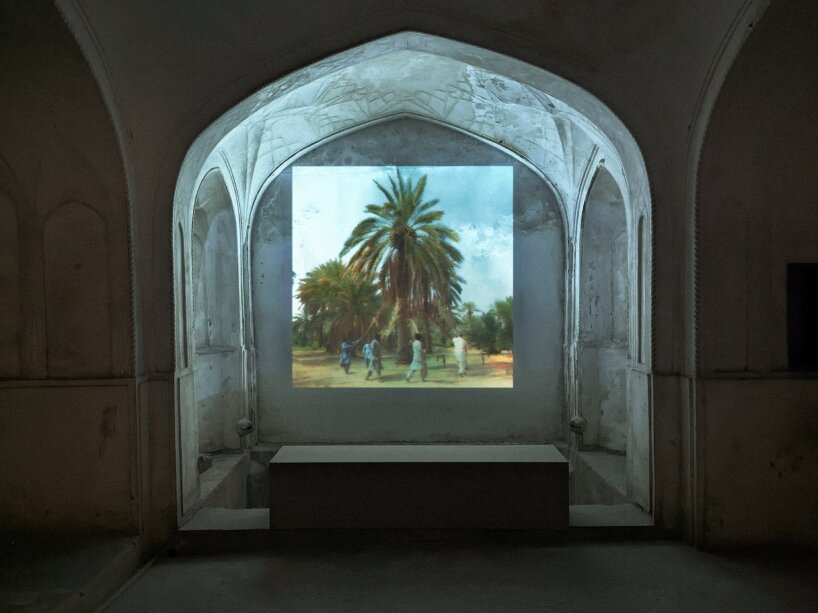
Phoenix by Zheng Bo
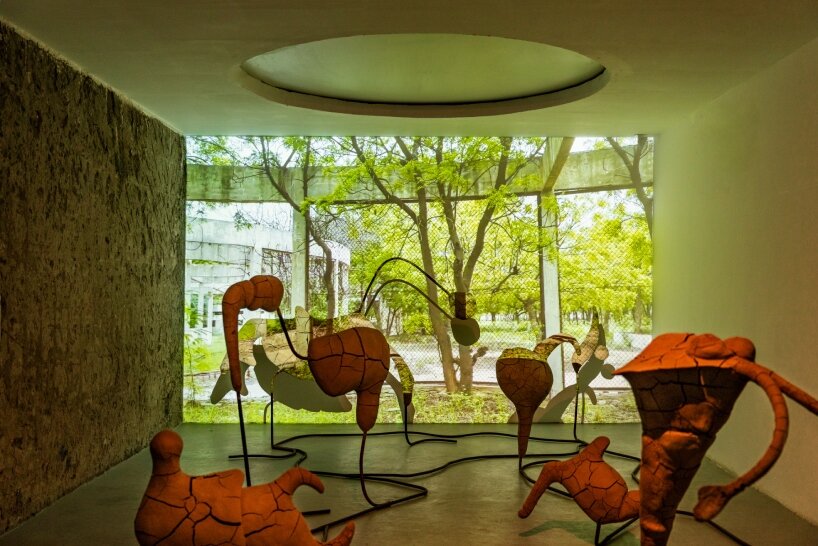
Memory Orbits by Ehsan ul Haq and Iqra Tanveer
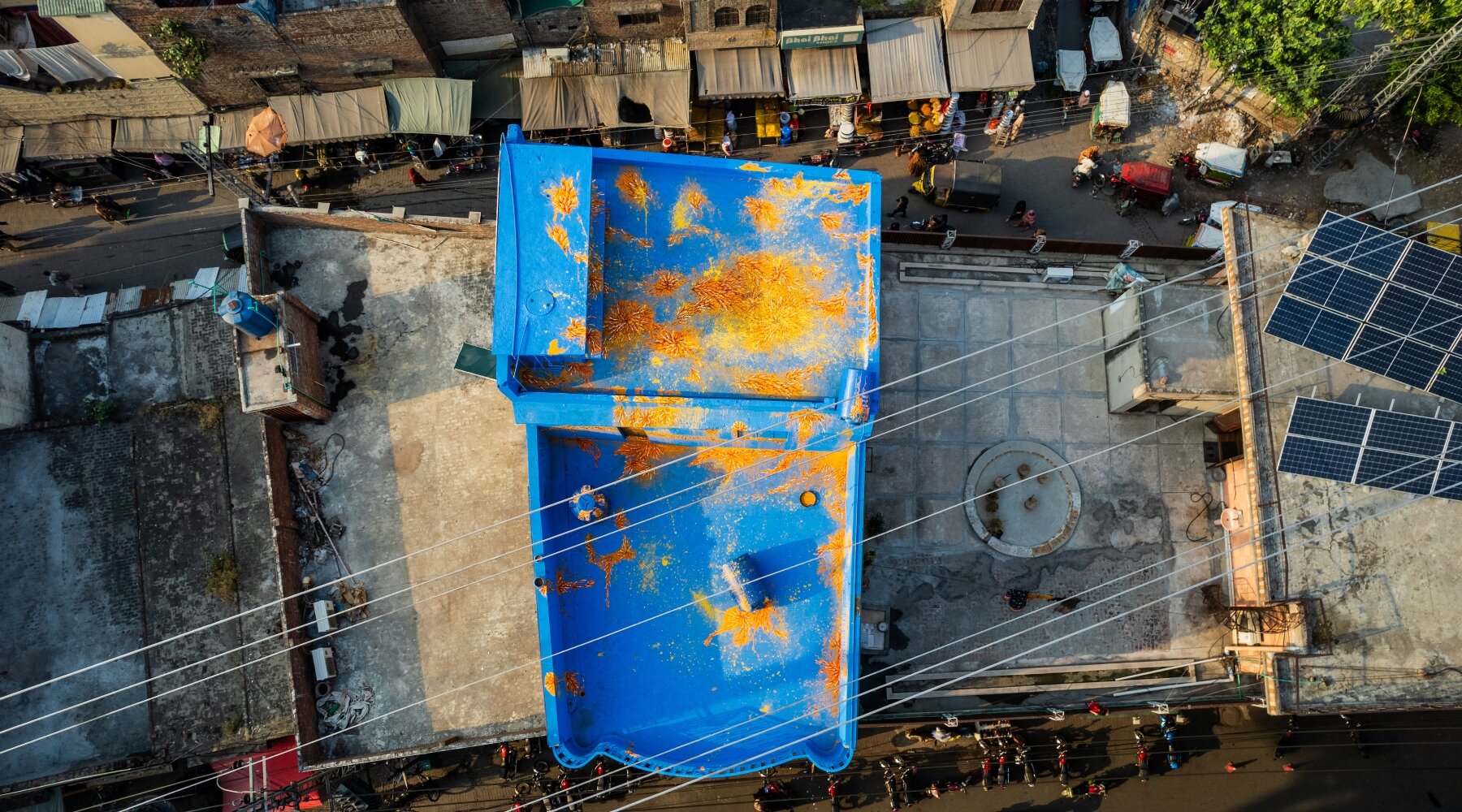
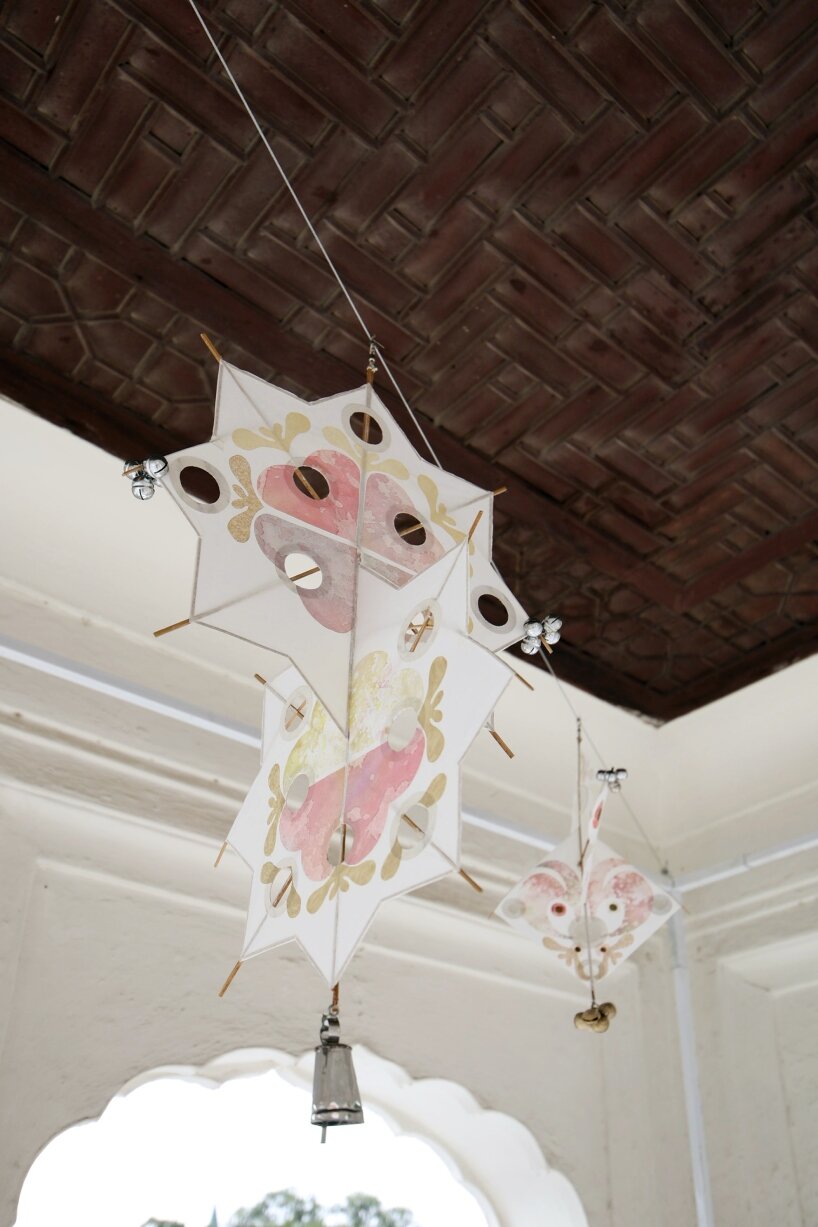
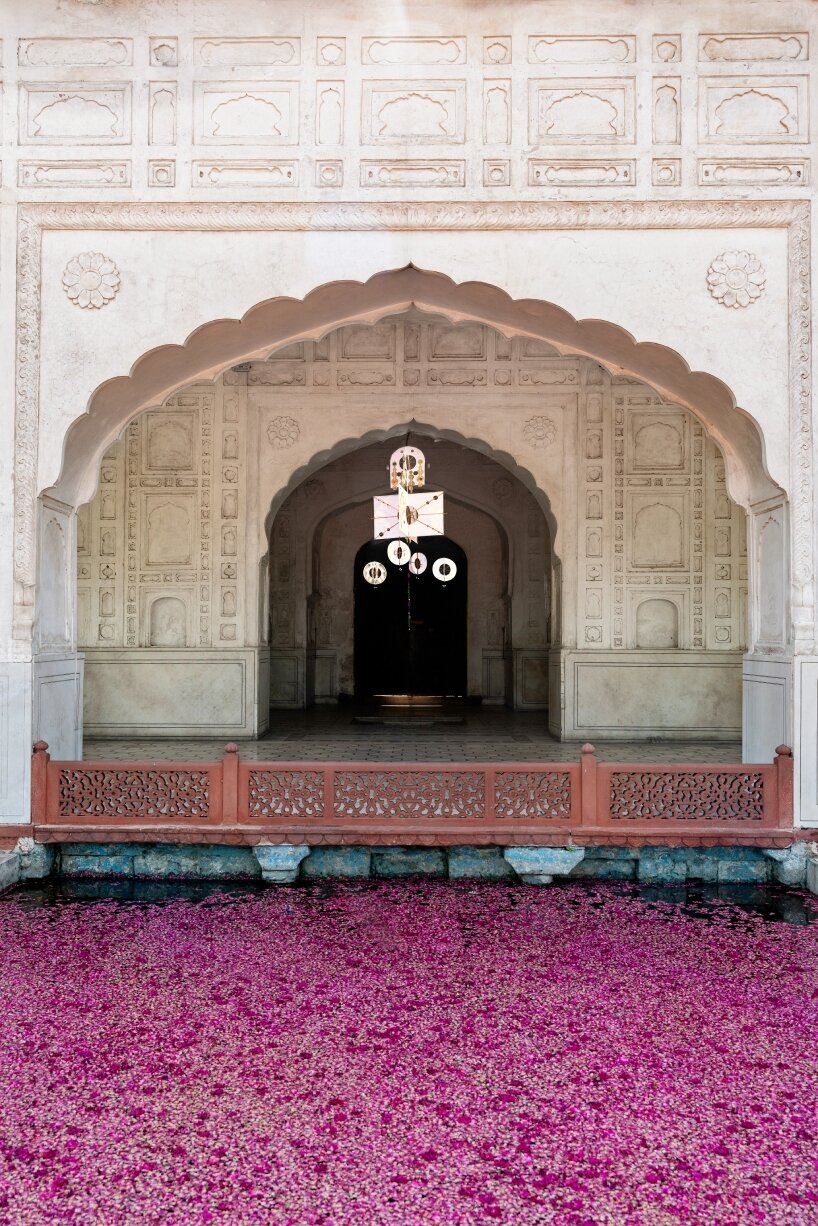
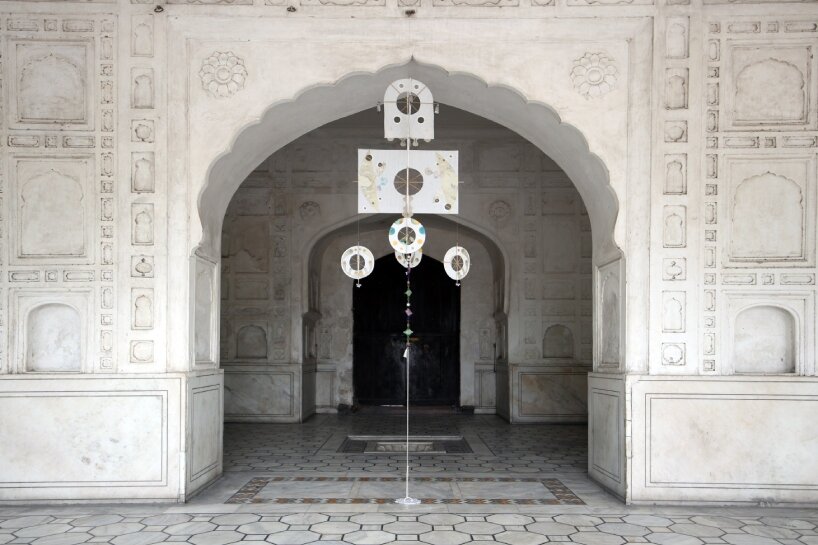
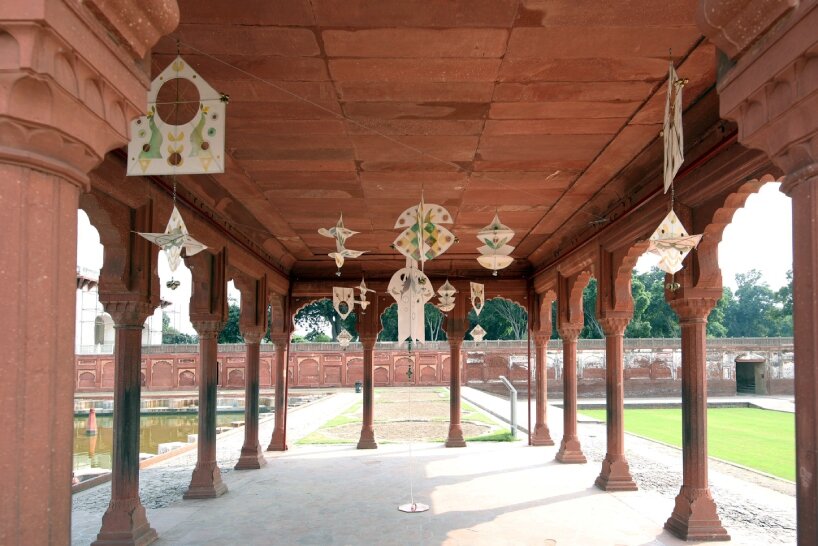

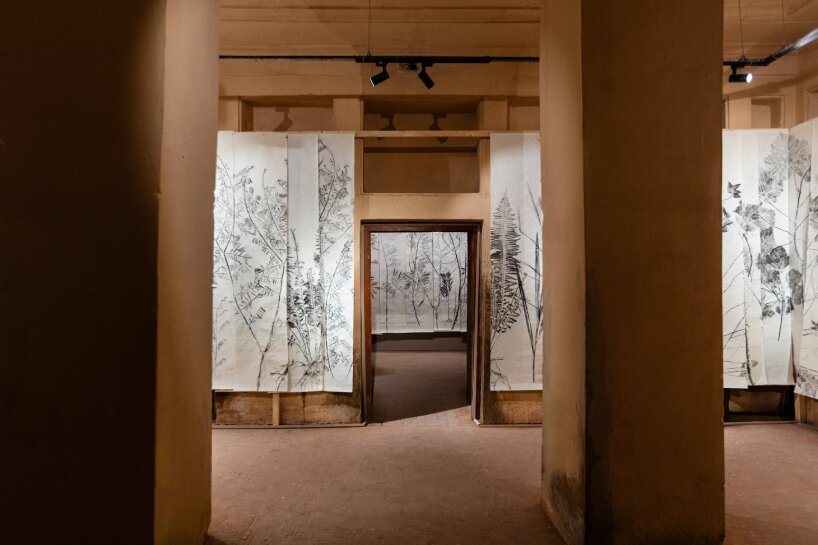
project info:
name: Lahore Biennale 03
curator: John Tain
organizer: Lahore Biennale Foundation
location: Lahore, Pakistan
dates: 5th October — 8th November, 2024
